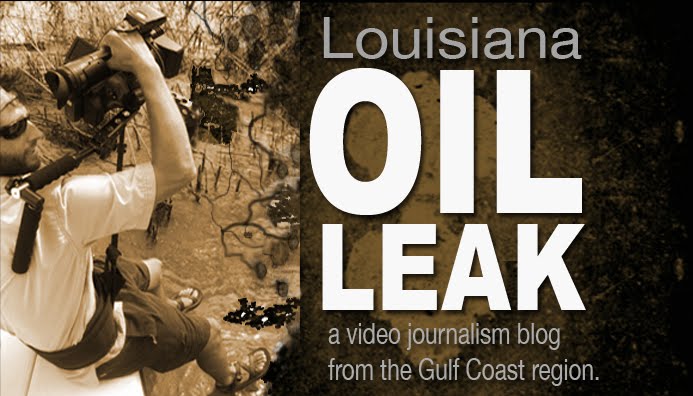Today I took a trip into the oil leak with Larry Schweiger, President of National Wildlife Federation and press folks from Field and Stream magazine and the Washington Post. We took the Mississippi River through South Pass and rode 14 miles into the Gulf of Mexico. This was the same distance that we found the oil on the previous day so it had not moved any further towards the mouth of the river.
Our charter captain, Damon McKnight with Superstrike Charters, gave some insight as to why this might be happening. He explained that the area of the gulf where the oil was located did not have a strong current running towards the mouth of the river. He also explained that the currents running out of the river mouth and into the gulf may be keeping the oil at bay.
The oil appeared to be much thicker and condensed than it was on Tuesday. This was probably a result of calmer seas. The rough seas and high winds of the last few days have kept the dispersed oil particles from forming together. The smell of the chemicals that were used to break the oil down was much stronger today as well.
After surveying the oil for about 15 minutes, our captain spotted a sea turtle on the surface. He crept the boat in the turtle's direction and the turtle stayed put. I thought for sure the turtle was dying because he did not seem alarmed. When we were close enough to see him better we realized that he was feeding on a dying jellyfish that was caught in the dispersed oil. Just as we got close enough to take a picture, the turtle dove below the surface and I was not able to get a clean shot of him eating the jelly fish.
This was the second day in a row that we saw a sea turtle swimming in the murky oil water, and we are pretty sure they are attracted to the oil because it holds dead jellyfish on the surface.
What really shocked me about riding through the oil today was that there was not a single boat or crew to be seen testing the oil and taking samples. Without someone testing the dispersed oil and knowing its dangers, we have no idea the kind of long term impacts that we could be facing.
I have yet to hear any kind of environmental impact statement from BP that covers the status of the dispersed oil slick in the Gulf of Mexico. I encourage everyone who reads this to contact their members of congress demanding that BP immediately examines the environmental impacts of the dispersed oil in the gulf.
Wednesday, May 5, 2010
Subscribe to:
Post Comments (Atom)


woah - so that red/copper color in the video is what happens to the oil when the chemicals are mixed in? It looks like there is tons of trash in there too...is that just 'oil clumps' or something?
ReplyDelete